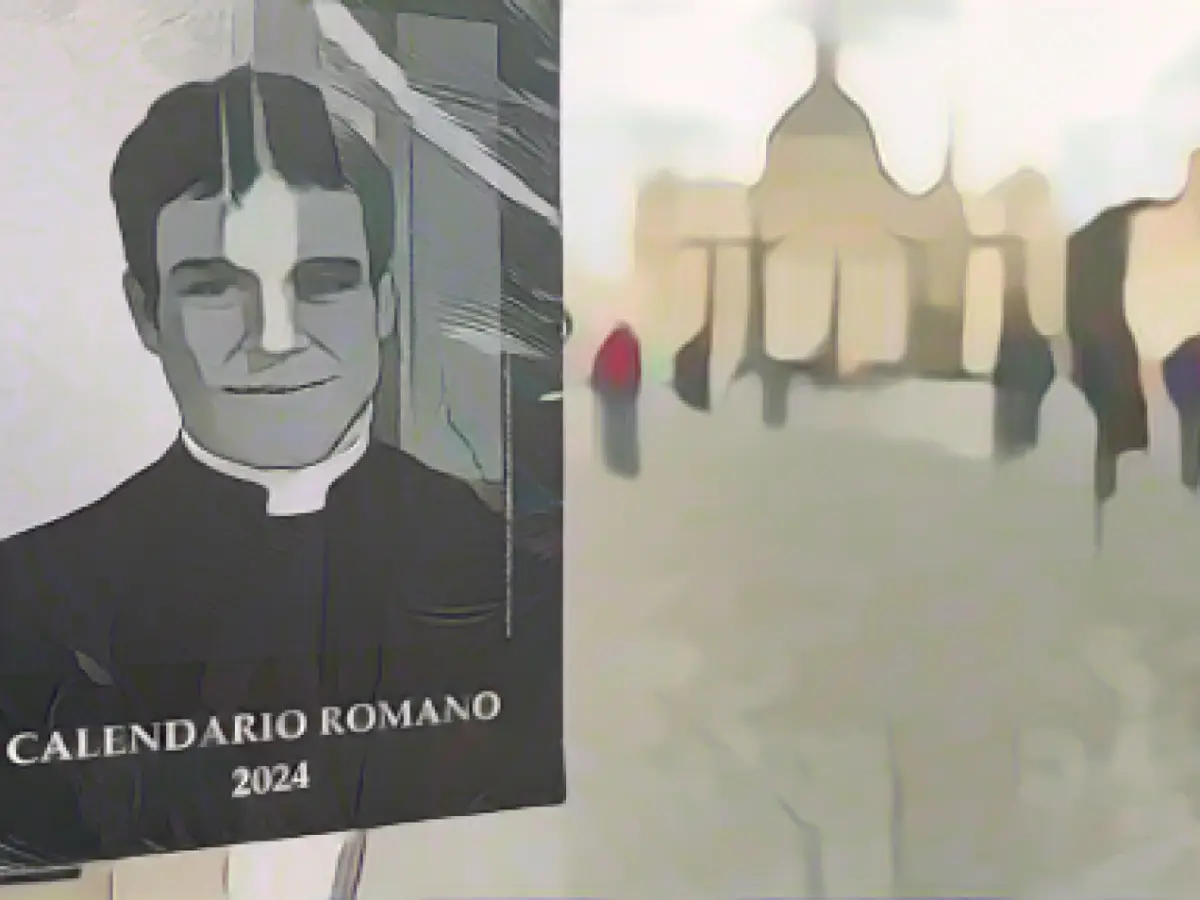In the final weeks of the year, Rome's cityscapes are adorned with another familiar face – the star of the "Calendario Romano" for 2024. Displayed in souvenir stores surrounding the Vatican, the annual publication places a charming young man in priest attire on its cover, a common sight for clergymen in this city. However, these smiles haven't always been as hearty – the gentlemen usually donning this black-and-white ensemble are a bit older, and their demeanor is typically more reserved.
First introduced in 2004, "Calendario Romano" has become one of the Italian capital's top-selling souvenirs. It's not just the practical information it provides, such as popes' names and pharmacy opening hours, that draw tourists from all corners of the globe. Unbeknownst to many, the real attraction might be its subtle eroticism, reminiscent of the TV series "The Thorn Birds" and its iconic priest character.
"Pin-Up Priest" or "Handsome Holy Men" – it goes by various names, but few call it by its real title. The cover boy's identity has remained a mystery until his 20th anniversary, when it was unveiled that the man behind the smiles was, in fact, a 37-year-old Sicilian named Giovanni Galizia, a former model and now an airline steward.
His fame began in 2002, when he posed in a church in Palermo for a photo shot by Piero Pazzi, a Venetian hobbyist photographer. His goal was to capture Italy's classic landscapes and characters, with Rome's priests fitting the bill perfectly. The image of an attractive young man clad in priest attire quickly gained popularity, eventually becoming the foundation of the infamous calendar.
In a recent interview with Spanish newspaper El País, Galizia admitted to having no remorse about the deception. As far as he's concerned, it was just a photo shoot, and there was nothing wrong with it. In fact, some may have guessed the truth from the start – rumors swirled around the calendar for years, with many doubting the authenticity of the cover boy and the "March priest" being a real estate agent.
Despite the controversy surrounding its real stars, the "Calendario Romano" has continued to soar in popularity, even gaining momentum on social media platforms like TikTok. Each year, the Vatican turns a blind eye, viewing the calendar as an "individual initiative" with no objections. It can be purchased for a mere €8, and tens of thousands of copies are sold annually around the city, branded in plastic for preservation.
Though the man on the cover is an imposter, not every entry in the calendar is a fabrication. In fact, some priests are genuinely featured – for example, "August," a well-known clergyman from Poland. The television series "The Thorn Birds" may have laid the foundation for the success of this seemingly controversial publication, but the enchantment of the "Calendario Romano" runs much deeper than its racy roots.
Calendar creator Piero Pazzi made good use of the popularity, venturing into creating a nuns' edition a few years later. Unfortunately, the idea did not gain traction, and the nuns' calendar was discontinued quickly.
Regardless of whether the faces on the calendar are real or not, the allure of the "Calendario Romano" continues. With plans to release a special edition for the "Holy Year" in 2025, the calendar's momentum shows no signs of slowing down.




